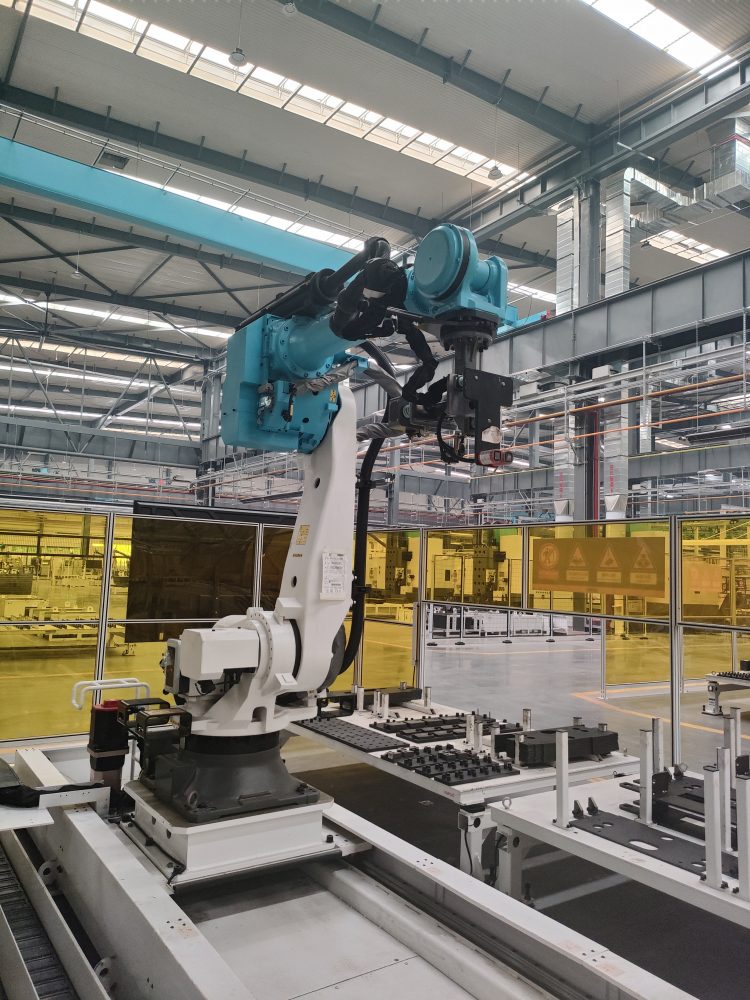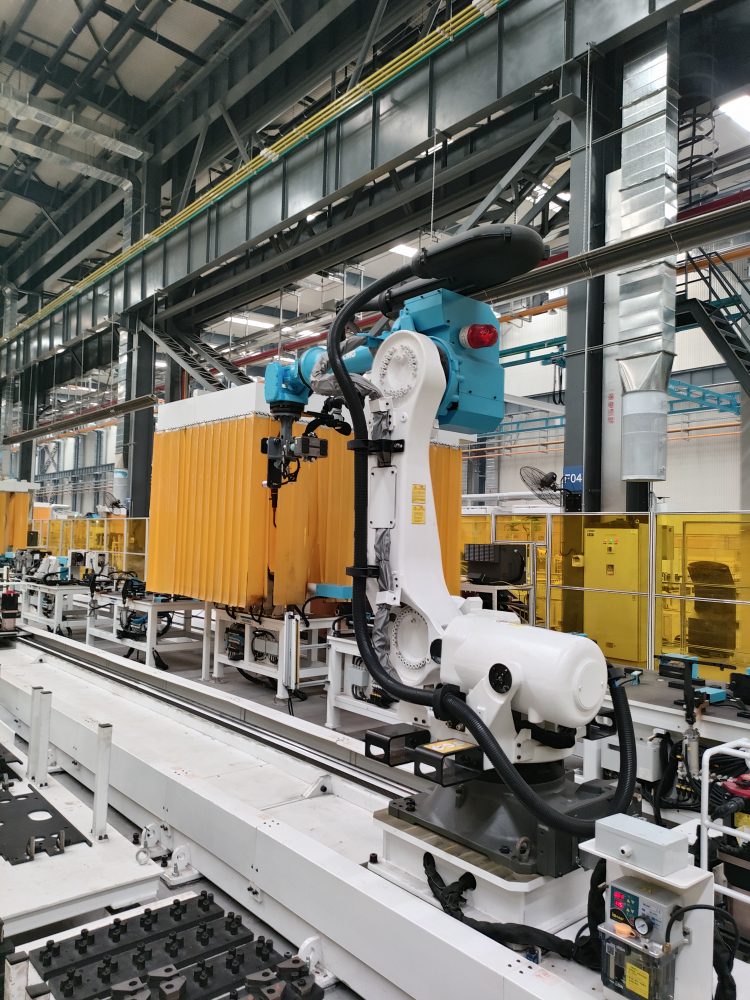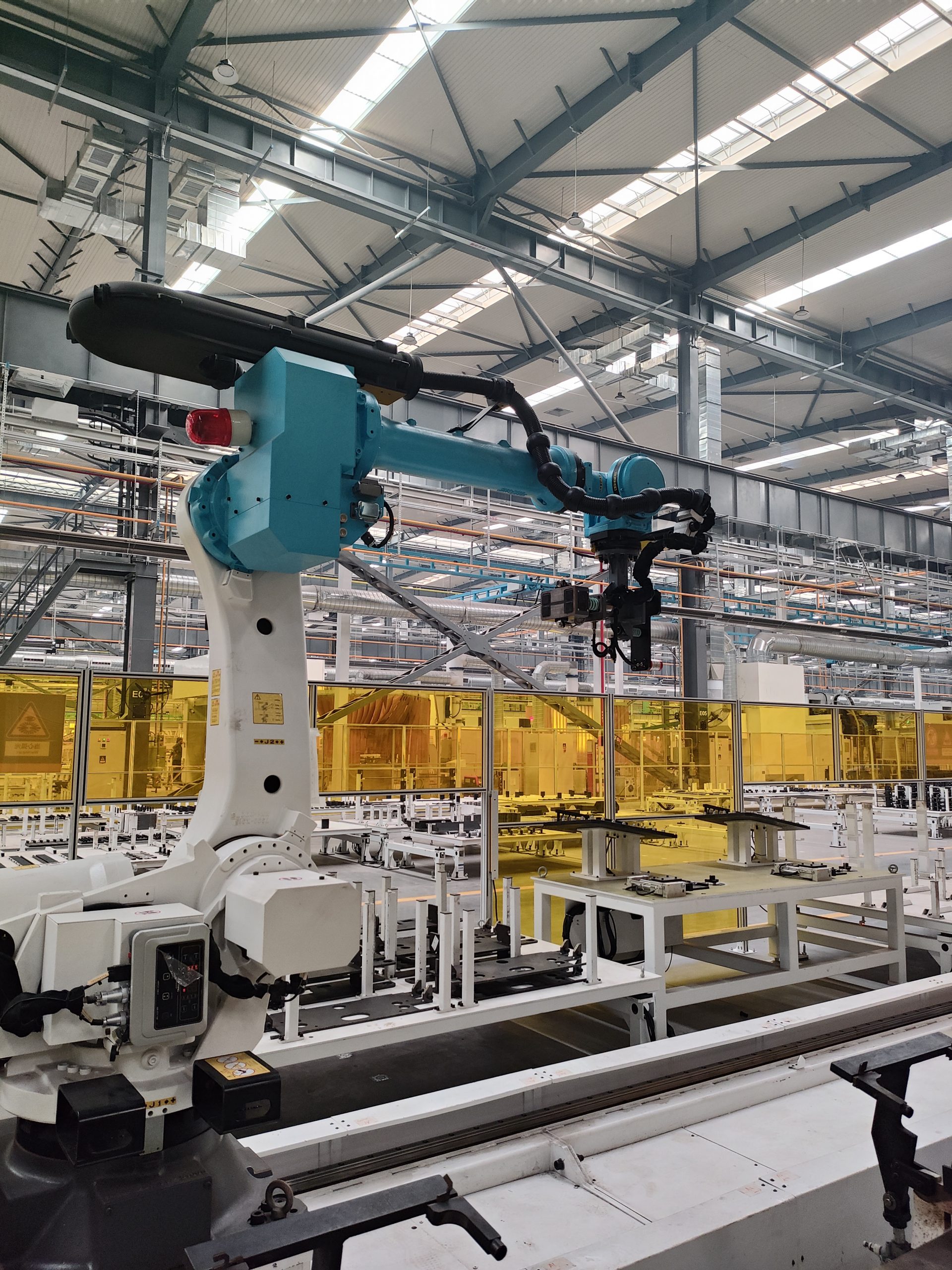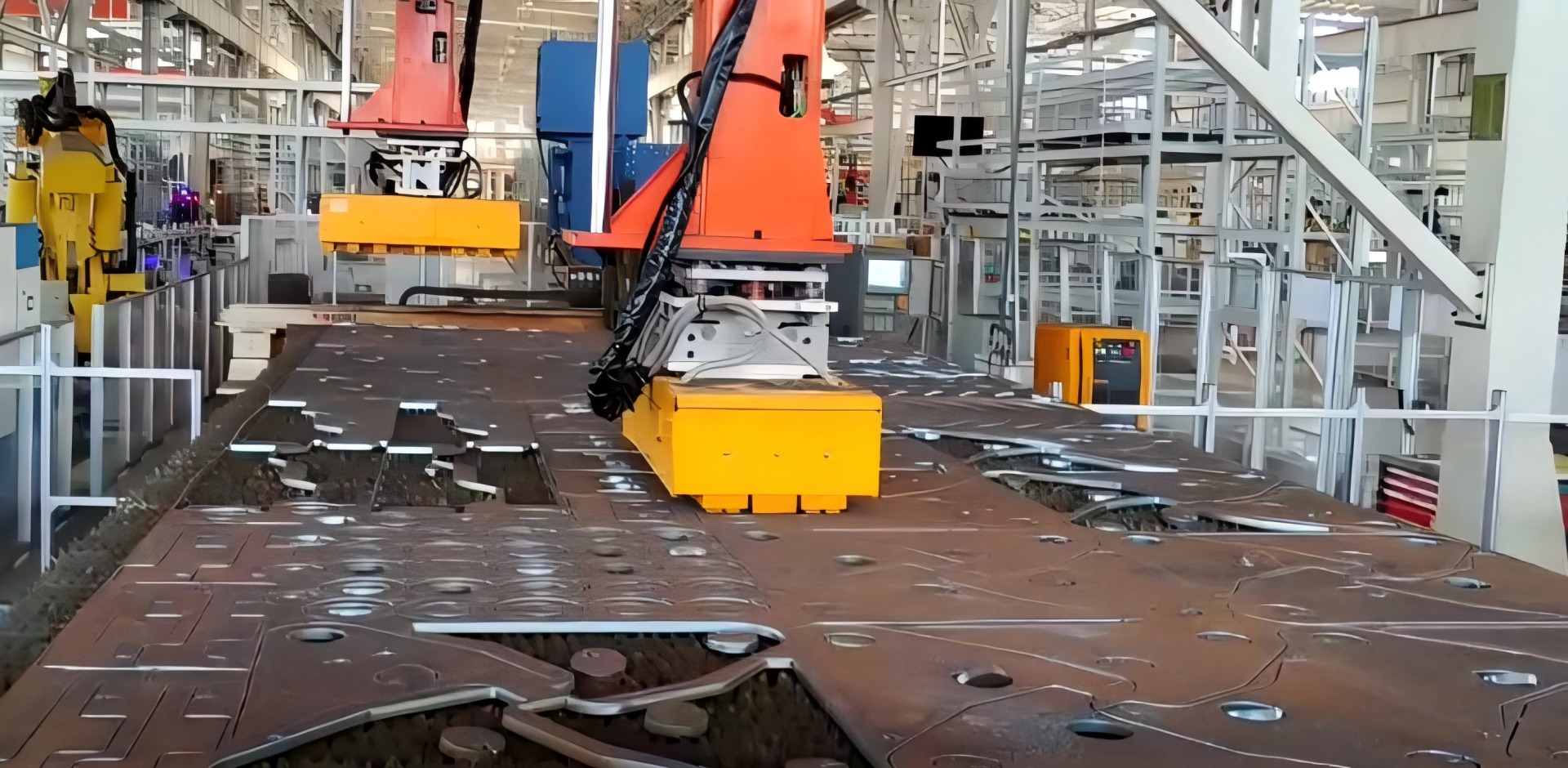In modern manufacturing, the transition to automated cells requires end-of-arm tooling that is both precise and non-invasive. We recently collaborated on a project where our Magnetic Gripper technology was integrated into a robotic system for a specific task: handling 20kg workpieces for fuel tank assembly.
The robotic cell was designed for a pick-and-place operation. The robot, equipped with an electro-permanent magnet as its end-effector, lifts a raw workpiece, transfers it to a machining fixture, and later unloads the finished part. This “flat-lift, flat-release” motion is fully automated, creating a seamless workflow.
Addressing the Challenges of Conventional Handling
The previous manual method for this process presented several operational challenges. It required two operators to physically handle, position, and clamp each workpiece. This approach was not only labor-intensive but also introduced variability and potential for error.
Operational Advantages Realized
The implementation of the electro-permanent magnetic gripper led to several distinct improvements in the process:
Enhanced Process Stability and Quality: The magnetic force is distributed evenly across the workpiece’s surface. This eliminates the mechanical pressure and sharp contact points associated with traditional clamps or mechanical grippers, effectively preventing surface scratches and minimizing the risk of workpiece deformation. This consistent, non-marking handling contributes directly to a lower product defect rate.
Significant Gains in Efficiency and Output: The automation of the handling cycle has dramatically increased the pace of operation. The robot operates continuously with high speed and repeatability, removing the natural variability of manual labor. This has resulted in a production capacity that is more than three times greater than the original manual process.
Inherent Safety and Workplace Organization: By removing the need for manual lifting and repetitive clamping, the solution has completely eliminated the associated risks of musculoskeletal injuries and pinch-point accidents. Furthermore, the automated cell has a more organized and streamlined layout, contributing to a cleaner and more orderly workshop environment.
This application demonstrates how electro-permanent magnet technology can serve as a critical enabler for automation, directly addressing concerns for quality, efficiency, and workplace safety in material handling.





